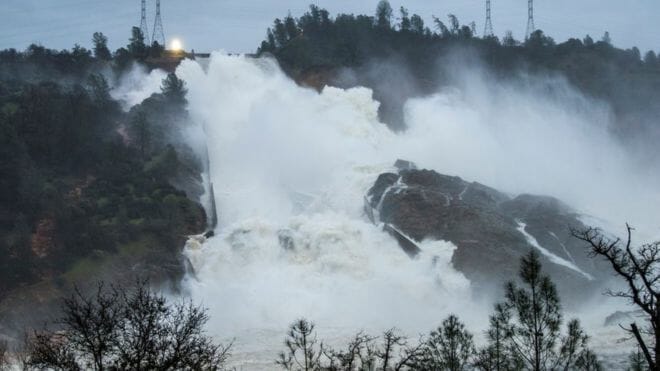Photo: Problems at the Oroville dam in California in 2017 saw 10,000 people evacuated
A new study says that many large-scale hydropower projects in Europe and the US have been disastrous for the environment.
Dozens of these dams are being removed every year, with many considered dangerous and uneconomic.
But the authors fear that the unsustainable nature of these projects has not been recognised in the developing world.
Thousands of new dams are now being planned for rivers in Africa and Asia.
Hydropower is the source of 71% of renewable energy throughout the world and has played a major role in the development of many countries.
But researchers say the building of dams in Europe and the US reached a peak in the 1960s and has been in decline since then, with more now being dismantled than installed. Hydropower only supplies approximately 6% of US electricity.
Dams are now being removed at a rate of more than one a week on both sides of the Atlantic.
The problem, say the authors of this new paper, is that governments were blindsided by the prospect of cheap […]
Full article: Large hydropower dams ‘not sustainable’ in the developing world
More about hydropower dams and waterways:
Portland, USA, Goes Green with Water Pipes: Innovations in Hydropower
83% decline of freshwater animals underscores need to protect, restore freshwaters
Renewable Energy Saves Water and Creates Jobs
The Hidden Opportunity for Water Storage in California


